When selecting a fire pit, the distance from your house is an essential factor to keep in mind. Not only is this a necessary precaution for safety, but it will also safeguard your property from smoke and embers that can cause irreparable destruction. To ensure your safety, how much distance should you maintain between your fire pit and house? Read on to find out.
Regulations on Residential Fire Pits
When setting up a fire pit in your backyard, it is essential to be aware of any local ordinances that must be followed. These regulations normally mandate the minimum distance between a fire pit and any combustible materials or structures.
To be sure that your fire pit follows local regulations, check with your city or county government before building it. They will be able to provide you with specific requirements for your area. Prior to lighting or building your fire pit, be sure to obtain the required permit.
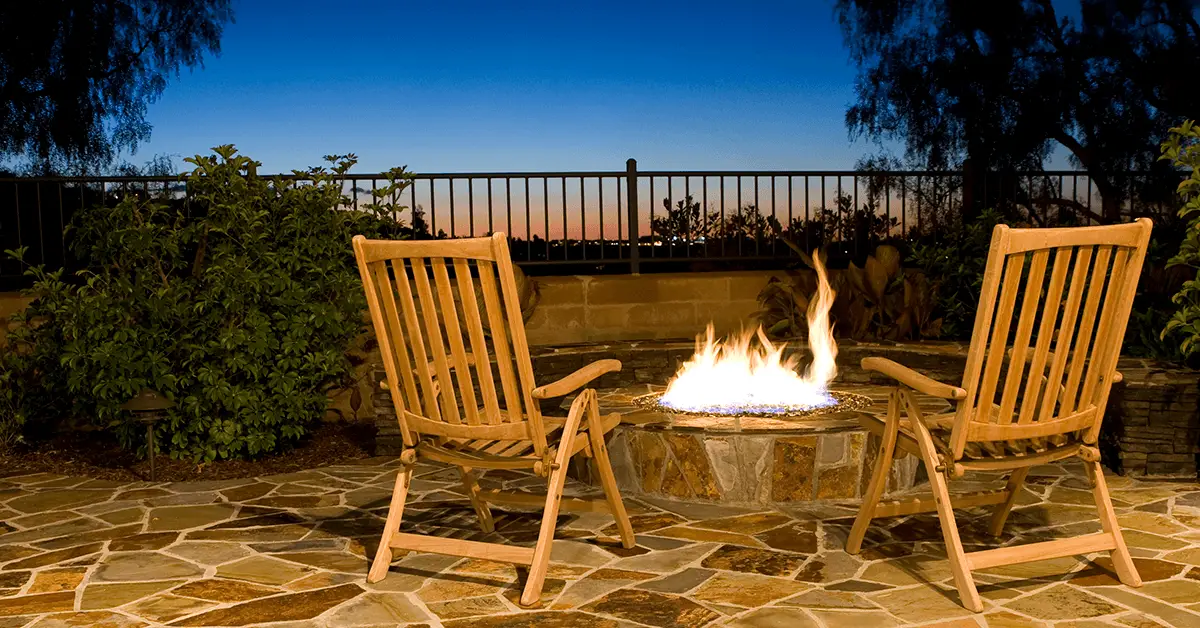
Ultimately, when siting a residential fire pit, it’s important to take into account both safety and legal considerations. By understanding local rules and guidelines, as well as maintaining the recommended minimum distance between the fire pit and any structures or combustible materials, you can enjoy your backyard safely and responsibly. [1]
Fire Pit Distance From House
It is critically essential to understand the appropriate distance a fire pit needs to be from your home in order to guarantee your own safety and that of your dwelling. Fire pits can generate sparks and have hot surfaces that can ignite nearby combustible materials like wood or dry vegetation. In order to prevent any potentially hazardous incidents or fires, it is essential that you are aware of the suggested safe distance between your fire pit and house.
The required distance for any fire pit construction or operation is subject to local building codes and ordinances, so it’s important to do your due diligence by researching these guidelines before undertaking the project. Overall, experts typically advise keeping open fireplaces at least 10 feet away from any building materials such as walls, roofs, and decks – not to mention flammable objects.
To ensure safety, always verify building codes and regulations in your local area regarding how far a fire pit should be from a house before beginning construction or burning anything in the pit. By following these guidelines, you can help prevent dangerous accidents or fires while enjoying your outdoor fire pit.
Type of Fire Pit
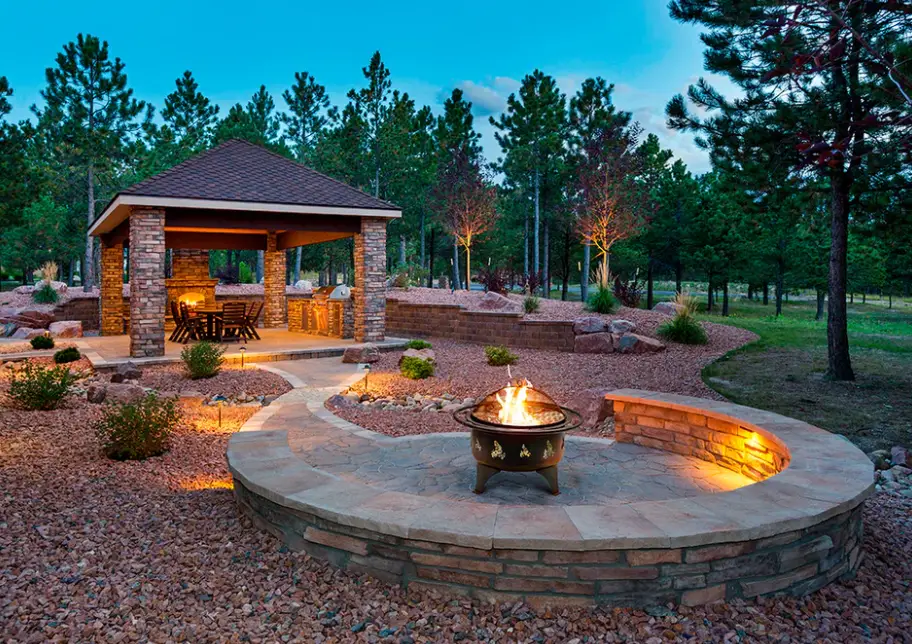
The distance your fire pit should be from your house depends on the type of fire pit you choose. For example, a stone or brick built-in fire pit should be placed at least 10 feet away from any structures. This applies whether the structure is made of wood, vinyl siding, or other combustible materials. Any metal fire pits should have a minimum clearance of 25 feet from any structures due to their intense heat output and high risk of sparks that could ignite nearby combustibles.
When it comes to portable fire pits, there are many types available on the market today including gas fueled ones which need to be kept 20 feet away from any structures. Wood burning portable fire pits need more distance for safety and should always be positioned 30 feet away from the house. If you are using an outdoor fireplace or chiminea, these should be placed at least 8-10 feet from any buildings.
Furthermore, it’s important to consider the direction of prevailing winds when positioning your fire pit relative to your home. Wind gusts can easily blow sparks towards a structure and ignite any combustible material in its path. Finally, always make sure you take into account local building codes and ordinances as they will supersede any other general guidelines regarding placement of fire pits near homes. Above all else use common sense and don’t place a fire pit too close to anything that could potentially catch on fire! [2]
Operation Guidelines
To ensure the utmost safety, a fire pit should always be placed at least 10 feet away from any form of structure, including homes. For safety reasons, it’s important to make sure the area surrounding the fire pit is free of combustible materials and that there is a sufficient distance between the flame and the house in order to keep embers from catching something on fire. Additionally, avoid placing furniture too close to your fire pit as this could increase the risk of accidental fires.
When starting a fire, make sure you follow all state laws regarding burning regulations and never leave a fire unattended. Additionally, always use caution when handling flammable liquids such as gasoline and other accelerants near your fire pit—these substances must be stored in an approved container away from the fire.
When it’s time to put out your fire, be sure to douse it with plenty of water and stir the ashes around until they’re completely cool.
Finally, never leave any smoldering embers behind—if you can still feel heat from the pit, make sure you’ve put out all potential flames before leaving. By following these simple guidelines, you can enjoy a safe and enjoyable campfire experience for many years to come.
Where Should You Not Put A Fire Pit?
Never put a fire pit without approval from your local authorities
Generally, a fire pit should not be placed near combustible materials such as wood decks and trees. A fire pit should always be placed at least 10 feet away from any structure, including a house or shed. It is also important to check with your local authorities regarding ordinances or restrictions on outdoor fires in your area, including the minimum distance from buildings and property lines. Additionally, never leave a fire unattended, especially when children and pets are present.
Never position a fire pit exposed to high winds
If there is a fire danger in your area, do not light any outdoor fires. Strictly follow any local regulations regarding outdoor fires. Finally, always have a bucket of water or sand near the fire pit to put out the flames quickly just in case they escape control. Remember, safety first!
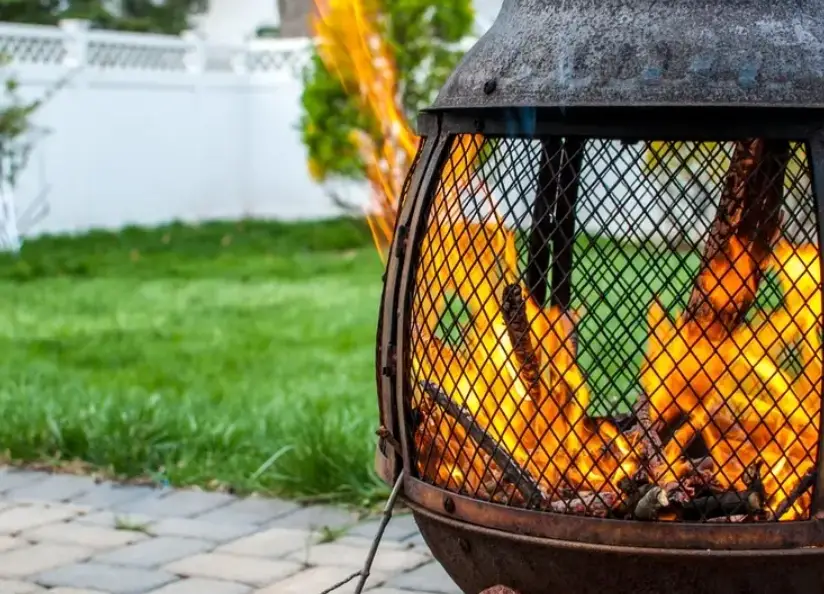
Never use non-porous and water-retaining materials
When building a fire pit, never use any non-porous and water-retaining materials such as concrete, brick or cement. These materials will retain heat much longer than other types of materials. As an alternative, consider using a metal fire pit that has been approved by local authorities. This type of fire pit can be moved easily and is less likely to retain heat for long periods of time.
Never leave a fire unattended
It is also important to follow general safety guidelines when using a fire pit. Make sure the area around the fire is clear of flammable material and keep children and pets away from it at all times. Additionally, never leave your fire unattended and always extinguish the flame completely before leaving the area.
Never use a fire pit near potential fire hazards
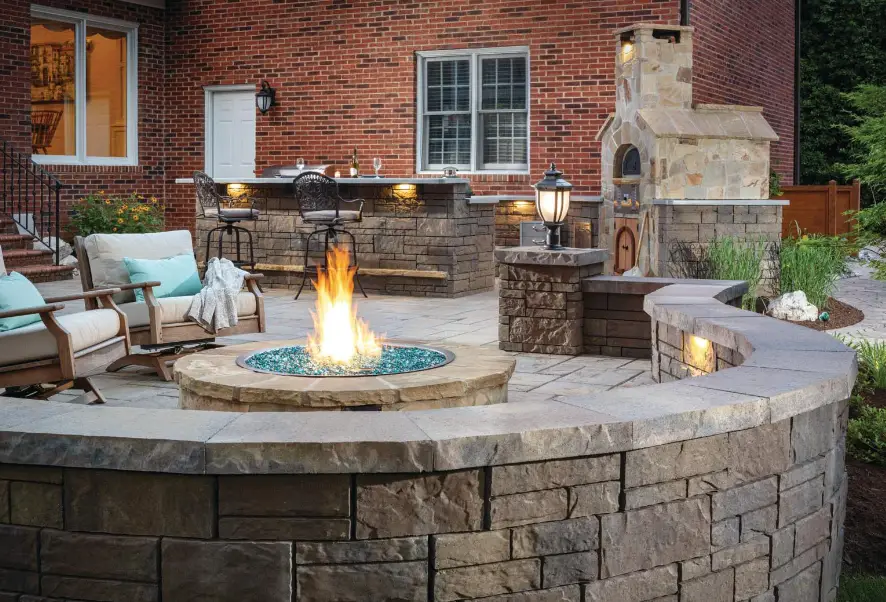
Be mindful of potential fire hazards when using your fire pit. Avoid burning combustible materials such as wood or paper near the fire and never use a fire pit close to dry grasses or other vegetation that could ignite easily. Additionally, keep an eye on any sparks that may fly out of the pit so they don’t land on nearby surfaces. [3]
Never use a fire pit in a limited space
Finally, never use a fire pit in an enclosed or limited space. Make sure the area has adequate ventilation to prevent smoke and other pollutants from accumulating. Additionally, make sure the fire is placed at least 10 feet away from any structures or combustible materials.
Is It Ok To Put A Fire Pit On Grass?
When it comes to fire pits, the old adage that ‘safety first’ should always be heeded. When dealing with a grassy area, there are several factors to consider before lighting the flame.
The distance of your fire pit from any structures on your property is important when deciding whether or not to put it on grass. Make sure that the fire pit is at least 10-15 feet away from any buildings such as houses, outbuildings and sheds to ensure safety. This will help reduce the risk of sparks and embers flying in directions other than up into the air.
In addition, make sure that there is no dry vegetation close by as this can lead to uncontrolled fires if ignited by sparks and embers. It is also important to note that grass can be flammable and should not be used as the base for the fire pit. Instead, you should use a material such as gravel or sand that will help keep your fire contained and cool.
Finally, have a water source nearby in case of emergent situations.
By following these simple guidelines when deciding where to put your fire pit on grass, you can ensure safety for your home and family while still enjoying the warmth of an outdoor fire. [4]
Invest Fire Safety Gear
Investing in fire safety gear is an important part of keeping your family and home safe if you have a fire pit. Fire safety items such as a fire extinguisher, water source, first aid kit, and protective clothing can help keep everyone safe if there is an unexpected flare-up from the fire.

Additionally, it is essential to make sure that the area around the fire pit is clear of any flammable materials such as wood or brush to reduce the risk of a larger fire getting out of control. Taking time to understand local laws regarding open burning and having emergency contacts on hand are also crucial steps for safely using a fire pit near your house.
Overall, making sure your chosen location for your fire pit is far enough away from your house is key. The general rule of thumb is to keep the fire pit at least 10 feet away from your home, a wooden fence, or any other structure that could catch flame if the fire were to get out of control. This will help reduce the chances of flames spreading and causing more serious damage. [5]
FAQ
How much space do I need around my fire pit?
When deciding how far to place a fire pit away from a house, the most important factor is safety. The recommended distance between a fire pit and a house should be at least 10 feet, making sure that any embers or sparks won’t reach combustible materials like wood siding. It’s also advisable to keep the fire pit away from overhanging tree branches or other flammable materials. Additionally, placing your fire pit in an area with good ventilation can help prevent smoke from entering the house. Finally, you may want to consider local laws and regulations when selecting the location for your fire pit as some states have specific guidelines about where it should be placed.
Where should a fire pit be placed?
This is an important question to consider when installing fire pits in your backyard. The placement of the fire pit should take safety into account, as it can be a potential source of danger if not placed properly. When deciding where to place the fire pit, you should always keep it at least 10 feet away from any structures or combustible materials. This will help ensure that sparks and embers don’t reach nearby buildings and start a fire. It’s also important to note that the higher you place the pit off the ground, the better. Placing it on a hard surface like concrete or brick is also recommended for extra protection against fires caused by errant sparks and hot coals.
The location of the fire pit should also take into account the prevailing wind direction. Positioning it so that smoke and sparks will be blown away from the house is ideal, as this will help prevent them from entering open windows or doorways.
Finally, always remember to use common sense when setting up your fire pit. Ensure that you have adequate ventilation in the area and never leave fires unattended for long periods of time. Taking these simple steps can help keep your family safe while enjoying a warm fire on those chilly nights.
Do you need ventilation for a fire pit?
Yes, proper ventilation is necessary for a fire pit. Without adequate ventilation, smoke and sparks can accumulate in the area, leading to health hazards such as carbon monoxide poisoning.
Additionally, having adequate air flow helps keep fires burning efficiently and prevents them from smoldering or producing too much smoke. If you’re using an indoor fire pit, it’s important to make sure that there’s a working vent or flue nearby so that smoke and other dangerous gasses can be safely removed from the room. For outdoor fire pits, positioning it correctly with respect to prevailing wind direction will help ensure that smoke and embers don’t reach nearby structures or people.
How far should a fire pit be from a sitting wall?
The distance of a fire pit from a sitting wall should be determined by building codes in the area, but generally speaking, it is recommended that a fire pit be at least 10 feet away from any structure. This includes sitting walls and other hardscapes such as patios and decks.
Additionally, combustible materials (such as wood) should not be placed within 3 feet of the fire pit to avoid possible ignition. For safest practice, it is best to consult with local authorities for specific requirements for your location as these may vary depending on municipality or state. When positioning a fire pit close to an existing hardscape such as a sitting wall, extra caution should be taken when placing and managing fuel sources near the flames.
What is the best thing to put under a fire pit?
The best thing to put under a fire pit is a non-flammable surface such as gravel or concrete pavers. These materials will help disperse heat and reduce the risk of fire spreading. Additionally, it is important to make sure that there are no combustible materials nearby that could catch fire. Finally, ensure that there are at least 10 feet of clearance between your fire pit and any structure or hardscape feature.
What are the rules for a fire pit?
When building a fire pit, there are certain safety rules you must follow. These include the distance of the fire pit from your home and other structures, as well as proper placement and maintenance. Firstly, it is important to keep your fire pits at least 15 feet away from any flammable structure like your house or other buildings. This will help ensure that if any sparks or embers fly out due to wind or smoke, they won’t land on something combustible.
Additionally, make sure that the area surrounding the fire pit has been cleared of leaves, sticks and other debris, as these could easily catch ablaze in such close proximity to an open flame. In addition to the distance between structures, you should also take note of the wind direction and make sure that your fire is facing away from any structures. This will help keep smoke and sparks from blowing into windows or other areas where they could be a hazard. Finally, you should always have a fire extinguisher nearby in case of any emergencies.
Can you leave a fire pit overnight?
No, you should never leave a fire pit burning overnight. This could lead to hazardous conditions and can be quite dangerous for you and your family. Before leaving the fire pit for an extended period of time, make sure that any remaining members have been extinguished completely by dousing them with water. Additionally, never use flammable liquids to start or maintain your fire as they can easily flare up and cause serious damage.
Useful Video: 5 Do’s & Don’ts When Using a Fire Pit on a Wood Deck
Conclusion
When considering how far a fire pit should be from a house, the general rule of thumb is to keep it at least 10 feet away. This distance will help protect surrounding structures and property from any potential flying embers or sparks. It’s also important to ensure that all combustible materials are kept at least 25 feet away from the fire pit. Additionally, burning only seasoned hardwood in the fire pit is recommended since softwoods tend to produce more sparks. Taking these precautions can help ensure that your outdoor gatherings around the fire stay safe and enjoyable for everyone involved.
References
- https://outlandliving.com/blogs/news/fire-pit-distance-from-house-safety
- https://serenityhealth.com/pages/how-far-should-a-fire-pit-be-from-a-house
- https://www.thisoldhouse.com/yards/21019364/fire-pit-safety
- https://openbackyard.com/fire-pit-how-far-from-house/
- https://picnictale.com/how-far-should-a-fire-pit-be-from-the-house/
- https://backyardtoasty.com/fire-pit-placement/











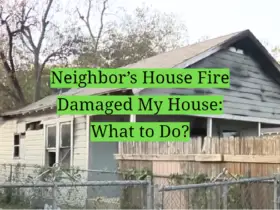


Leave a Reply